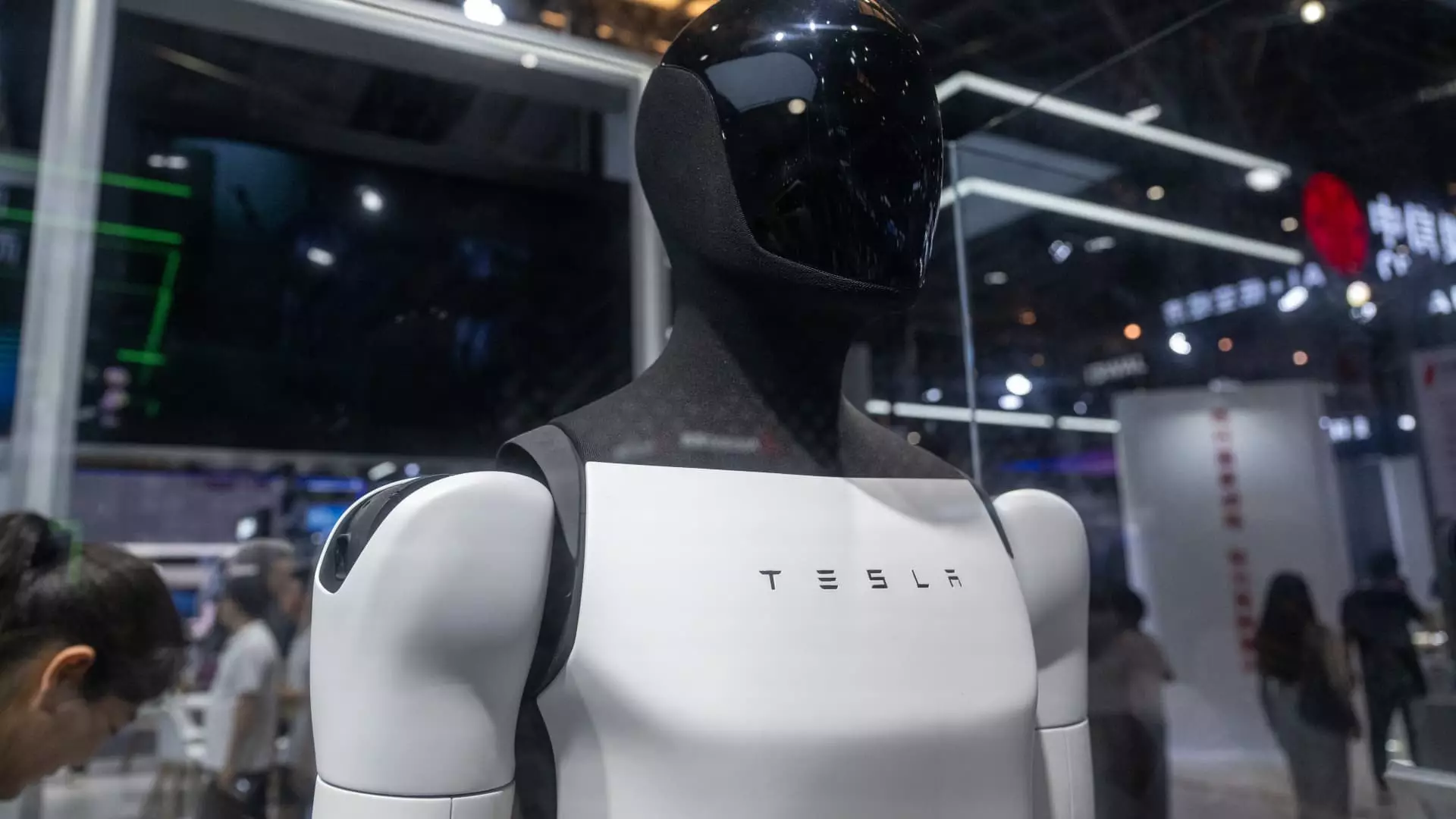In a rapidly evolving technological landscape, the significance of rare earth elements cannot be overstated. These materials are pivotal in various high-tech applications, including defense systems, renewable energy technologies, and, of course, robotics. Tesla’s recent encounters with China’s trade restrictions have thrown the spotlight on the role of these resources in pioneering initiatives such as the Optimus humanoid robot. CEO Elon Musk, during a recent earnings call, eloquently expressed how these export challenges could stall Tesla’s ambitious plans. His concerns underscore a more extensive discourse on the implications of international trade policies on technological advancements.
With China being the dominant player in the global rare earth market, any change in its export policies creates ripples that affect technology companies around the world. Musk articulated concerns that the new export controls could potentially threaten production timelines for the Optimus robots, essential for Tesla’s ambitious vision of integrating humanoid robots into both factories and everyday life. His words signal a clarion call for urgency in navigating these geopolitical challenges as the future of Tesla’s innovations hangs delicately in the balance.
Geopolitical Tensions and Their Effects on Global Supply Chains
The backdrop of this scenario is a complex tapestry woven with nationalism, economic rivalries, and trade wars. China’s imposition of strict export controls on rare earth magnets has been viewed as a retaliatory measure against U.S. tariffs, illustrating how corporate fortunes can be dictated by the decisions of governments. The requirement for companies like Tesla to secure licenses from China’s Ministry of Commerce adds a layer of bureaucracy that hinders swift operational decisions. Moreover, the request for assurances regarding the non-military use of these resources points to a broader concern about national security and technological supremacy.
In addressing these restrictions, Musk revealed Tesla’s proactive approach to finding solutions and securing essential resources. However, it raises questions about whether such efforts can truly mitigate risks of a supply chain bottleneck. The international landscape is fraught with the potential for escalating tensions, and corporations must adeptly maneuver through this minefield.
The Strategic Future: Humanoid Robots as Tesla’s Next Frontier
Tesla has meticulously charted a course toward integrating humanoid robots into its operational framework. Musk strongly believes that these robots could transform the automotive industry by enhancing automation and operational efficiency. His assertion that the company plans to manufacture thousands of units this year reflects an aggressive ambition to lead in this niche. Nonetheless, these aspirations may clash with reality if access to critical resources remains restricted.
Moreover, as Musk publicly maintains an optimistic outlook regarding Tesla’s advancements, the shadow of competition looms large. Chinese companies such as Unitree Robotics and AgiBot are gearing up to make significant strides in humanoid robotics, potentially leaving American counterparts at a disadvantage. If the U.S. market cannot swiftly adapt to these geopolitical hurdles, the result could be a sizable gap in technological innovation.
Investor Sentiment Amidst Production Uncertainties
With a current downturn in Tesla’s stock—down 37% year-to-date—the emotions of investors are understandably fraught with anxiety about the company’s growth trajectory. Musk’s declarations about humanoid robots symbolize a novel avenue for optimism; however, it also unveils a precarious balancing act for the company. As stakeholders seek reassurances about profitability and innovation, Musk’s ambiguous timeline and reliance on unproven markets could amplify skepticism.
The narrative that surrounds Tesla’s humanoid robots is rich with potential yet fraught with complexity. The innovative leap represented by Optimus could either reinvigorate investor confidence or serve as a cautionary tale of overreach without securing foundational resources. The stakes are high, as competitors brave the entrepreneurial waters whilst Tesla grapples with geopolitical quandaries that could shape its operational realities.
A Tipping Point for Automation and Global Trade Relations
China’s export controls do not merely present logistical challenges; they are emblematic of the broader implications of globalization versus nationalism in technology. As nations navigate their self-interests in a tightly interwoven economy, tech giants like Tesla find themselves at the whims of political landscapes far beyond their control.
As Tesla attempts to secure licenses and build cooperative relationships, the outcome of these negotiations holds profound implications not only for the company but for the global landscape of innovation. The interplay between trade policies and technological advancement will undoubtedly define the future of enterprises in every sector. If Tesla is to maintain its pioneering spirit, the need for strategic navigation through these turbulent waters has never been more critical.

